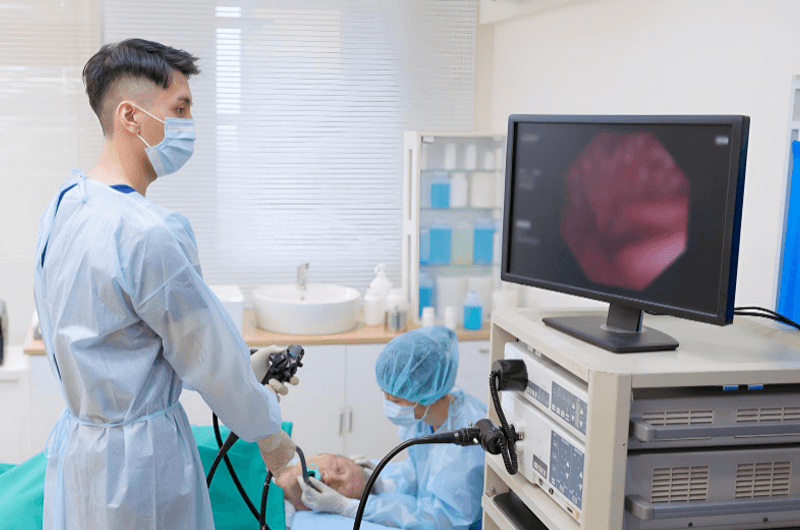GI/Endoscopy coding and billing can be complex. Providers need to determine medical necessity and the proper site for delivery of services, and know the specific codes and modifiers to bill for services rendered. Also, billing guidelines differ among insurance companies. Opting for gastroenterology medical billing services could be a feasible option to overcome these challenges and ensure appropriate reimbursement. Here are some important pointers for GI/Endoscopy coding and billing.
- Control of bleeding is not billed separately: Biopsy (and most other) endoscopic procedures include control of bleeding. Therefore, control of bleeding cannot be billed separately unless a patient arrives with a GI bleed and it is the reason why the endoscopy is performed. The choice of the CPT code depends on the location of the hemo or endo clips used to close the wounds and control the bleeding. Here are the CPT codes for endoscopy that include control of bleeding:Esophagoscopy:43227, Esophagoscopy, flexible, transoral; with control of bleeding, any method Esophagogastroduodenoscopy:43255, Esophagogastroduodenoscopy, flexible, transoral; with control of bleeding, any methodEnteroscopy:44366, Small intestinal endoscopy, enteroscopy beyond second portion of duodenum, not includingileum; with control of bleeding (eg, injection … )
44378, Small intestinal endoscopy, enteroscopy beyond second portion of duodenum, including ileum; with control of bleeding (eg, injection …)
Sigmoidoscopy:
45317, Proctosigmoidoscopy, rigid; with control of bleeding (eg, injection, bipolar cautery, unipolar cautery, laser, heater probe, stapler, plasma coagulator)
45334, Sigmoidoscopy, flexible; with control of bleeding, any method
Colonoscopy:
44391, Colonoscopy through stoma; with control of bleeding, any method
45382, Colonoscopy, flexible; with control of bleeding, any method
- Only successful surgeries should be billed: Physicians can bill the CPT code only for a successful colonoscopy technique/procedure. For either a colonoscopy or EGD procedure:If a lesion is biopsied and the same lesion is removed during the same session, only the removal of the lesion should be coded. The biopsy is not separately billable. If one lesion is biopsied and a separate lesion is removed using a different method during the same operative session, both the biopsy of the lesion and the removal of the separate lesion should be coded. Modifier 59 has to be appended if it is unbundled in the CCI unbundling edits. CPT instructs use of modifier 59 to identify two procedures or services that are not usually submitted together, but are appropriate under the circumstances.
- Biopsy procedures: If the colonoscopy procedure performed involves a biopsy and/or the removal of a polyp using the cold biopsy forceps method, CPT code 45380 can be billed once for any of the following situations:
- A single biopsy or multiple biopsies of lesions
- Removal of portions of a polyp by cold biopsy forceps
- Removal of an entire polyp by cold biopsy forceps technique
- “Cold” v. “hot” snare – temperature does not affect the code: The 45385 snare polypectomy code should be used whether snare polypectomy is performed using the cold or hot snare technique, or the electrosnare method.
- Understand the difference between screening and diagnostic colonoscopies: A screening colonoscopy should be reported with the following International ICD-10 codes:
- 11: Encounter for screening for malignant neoplasm of the colon
- 0: Family history of malignant neoplasm of digestive organs
- 010: Personal history of colonic polyps
The American College of Surgeons explains: “If a polyp is found and removed during the same procedure, these codes should still be listed as the primary diagnosis codes, followed by the appropriate ICD-10 code for polyp: D12.0–D12.9 (benign neoplasm of the colon or rectum, based on location)”.
- Separate codes for commercial/Medicaid patients and Medicare patients:For commercial and Medicaid patients – CPT code 45378, the base code for a colonoscopy without biopsy or other interventions is used. It includes brushings or washings, if performed.For Medicare beneficiaries, the Healthcare Common Procedural Coding System (HCPCS) codes are used -G0105 (Colorectal cancer screening; colonoscopy on individual at high risk) G0121 (Colorectal cancer screening; colonoscopy on individual not meeting the criteria for high risk)
- Incomplete colonoscopies: Incomplete colonoscopies not reaching the splenic flexure are reported as flexible sigmoidoscopies. Failed colonoscopies may also be referred to as “incomplete. The physician may be unable to complete the procedure the scope could not be advanced past the splenic flexure due to reasons such as a “poor prep”, unusual patient anatomy, presence of an obstructing lesion, or the provider performing the procedure is inexperienced. These procedures should be coded using 45378 or the appropriate G-code and modifier to indicate a discontinued procedure.
- Know the rules for screening procedures: Medicare has a separate modifier for situations in which polyps are found and removed during a screening colonoscopy. In such situations, the correct CPT code has to be used (for e.g., 45385), but with modifier PT. The G-code should not be used to bill for a screening study. The diagnoses with the screening diagnosis code should be listed first on the claim form, followed by the polyp or other applicable diagnosis code(s). Endoscopists should review the policies of their insurance providers and follow their guidance, especially for Medicare Advantage plans offered by commercial insurers.
Gastroenterology medical coding and billing is much easier with help from an expert. Medical coding companies that have experienced certified coders with gastroenterology-specific coding skills and billing specialists can ensure clean claim submission to maximize revenue.




